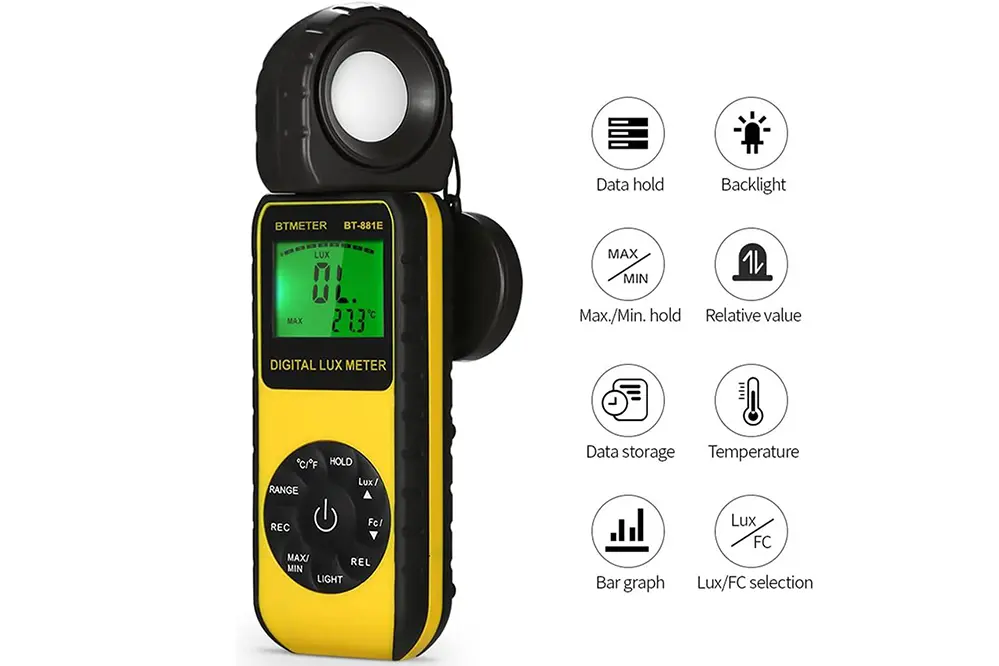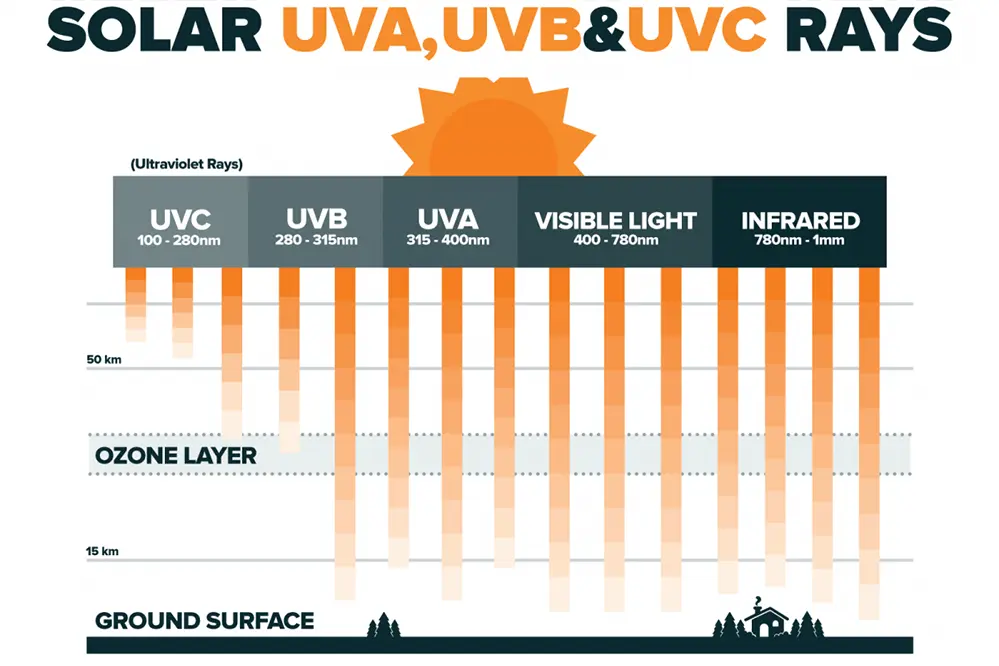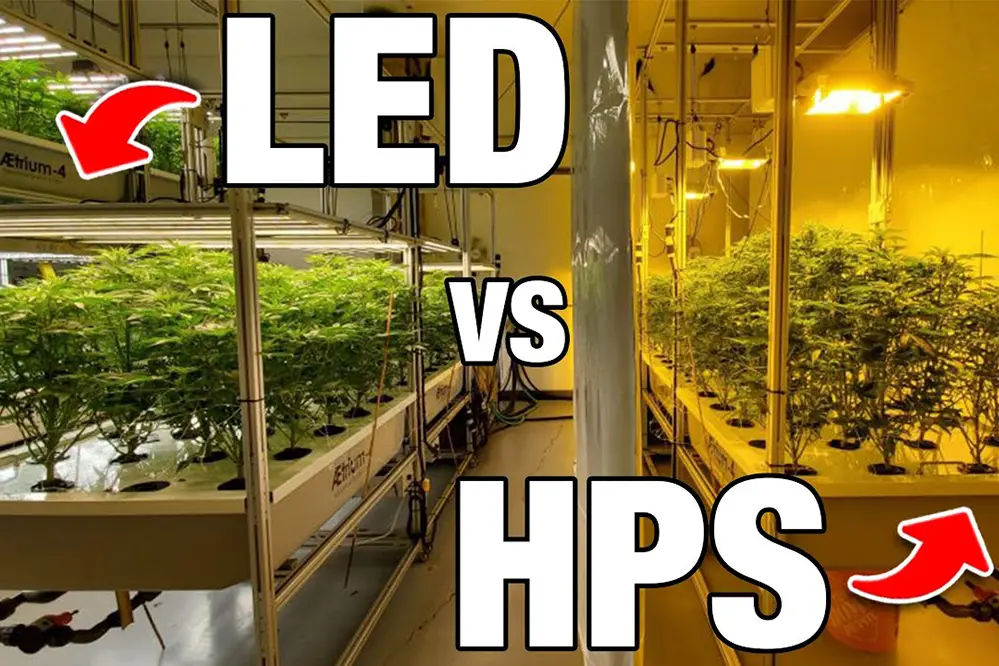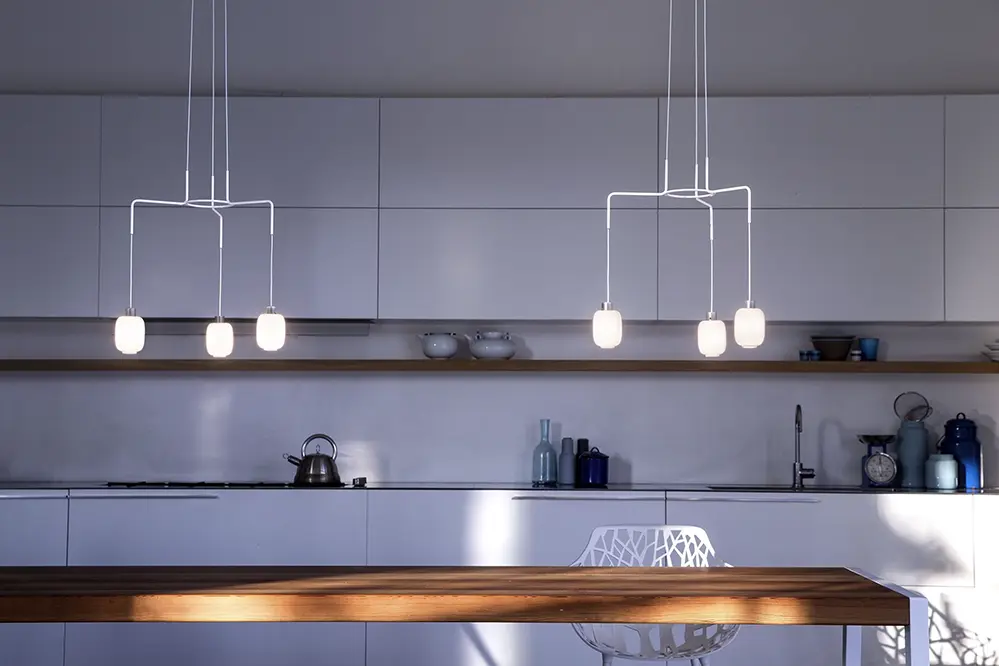Welcome, lighting enthusiasts and professionals, to an illuminating journey into the world of LED lighting! In this blog post, we will shed light on a fundamental concept that often goes unnoticed: the foot candle. Have you ever wondered what exactly a foot candle is and how it is measured? Prepare to have your curiosity sparked as we delve into the intricacies of this fascinating unit of measurement.
But first, let’s address the burning question: why is it called a foot candle? The term “foot candle” originates from the combination of two words: “foot” refers to the unit of length, and “candle” represents the traditional source of light measurement. Together, they form a unit that quantifies the amount of light falling on a surface from a single candle placed one foot away. Intriguing, isn’t it?
Now, let’s shed some light on how foot candles are measured. The process involves using a light meter, which measures the intensity of light in a given area. By placing the meter at the desired location and recording the readings, we can determine the number of foot candles present. This measurement is crucial in various industries, including architecture, photography, and, of course, lighting design.
As an industry veteran with over 15 years of experience, I, Tom, have witnessed the remarkable evolution of LED technology firsthand. Throughout my career, I have dedicated myself to staying at the forefront of advancements in the field. Drawing upon my extensive knowledge and expertise, I have meticulously crafted this blog post to provide you with a comprehensive understanding of foot candles and their significance in the realm of LED lighting.
So, dear readers, let’s dive right in! Join me on this enlightening exploration as we unravel the mysteries of foot candles, their measurement, and their diverse applications. Whether you’re a seasoned professional or a curious enthusiast, this blog post will equip you with the knowledge to make informed decisions and elevate your understanding of LED lighting. Let the journey begin!
Defining Foot Candle in Lighting
The term foot candle is a non-SI unit of illuminance, or light intensity, widely used in the United States to represent the amount of light that reaches a subject from a source of light one foot away. This measurement is grounded in the interplay between light output and the area it illuminates, effectively conveying the density of light in a specific location.
Within the realm of lighting design, a foot-candle is akin to a “lumen per square foot”. This metric informs us not only about the total lumens—a measure of light emitted—but also how those lumens are distributed over a given area. It offers a nuanced understanding of practical illumination in spaces, which is paramount to architects, interior designers, and lighting professionals tasked with creating environments that meet both aesthetic and functional needs.
The Origin of Foot Candle Terminology
The foot candle originates from the early days of electric lighting, referencing the light intensity one could expect from a standard candle at a one-foot distance. This quantification became a conventional means to articulate the intensity and spread of light within a space.
As incandescent lighting gained prevalence in the 20th century, the term “foot candle” emerged. It hails from measuring the illumination one foot away from a candle, serving as a benchmark for brightness standards.
The candle’s luminous intensity served as the cornerstone for early light measurement.
The adoption of this terminology underscores the evolution of lighting technology. As we transitioned from flame-based to electric light sources (incandescent bulbs in particular), the foot candle provided a bridge between new technologies and familiar measurements. Its persistence illustrates the enduring relevance of human-scale metrics in lighting design.
Comparison with Modern Lux Measurement
The foot candle measurement stands in contrast to lux, a modern unit of illuminance in the International System of Units (SI). One foot candle is approximately equal to 10.764 lux.
Lux has become the global standard for quantifying light intensity.
When comparing foot-candle to lux, the latter provides a measurement reflecting the illumination of a square meter by a single lumen, better aligning with the metrics system. Consequently, foot candles predominantly remain in use within the United States, while lux is widespread in international contexts.
The adoption of lux measurement over foot candles offers a degree of precision and standardization necessary in an increasingly global and interconnected lighting industry. As lux conforms to the metric system, it becomes an integral part of unified engineering, manufacturing, and regulatory practices, contrasting the regionally preferred foot candle measurement. Hence, lux caters to a broader range of applications, although the term “foot candle” persists in certain American industries.
Practical Applications of Foot Candles
In the realm of architectural design and interior planning, careful consideration of foot candle measurements can ensure that environments are appropriately illuminated for their intended use. The level of foot candles required varies drastically among different settings; for instance, a high-intensity environment like an operating room demands a far greater foot candle value than that of a cozy residential living room.
Understanding and implementing the correct foot candle levels is critical when designing lighting systems for safety and comfort. For example, in industrial settings, sufficient foot candles are vital to maintain safe working conditions, while retailers often use higher foot candle measurements to enhance product displays and encourage consumer engagement. The application of foot candle metrics thus plays a foundational role in creating both functional and aesthetically pleasing environments.
Role in Interior Design and Architecture
Foot candle measurements serve as a quantitative guide for lighting within architectural spaces, influencing mood, functionality, and safety. Elevated levels of illumination are not only essential for task performance but also contribute significantly to the aesthetics of a space.
Precise foot candle values define visual clarity and ambience in architectural design. This metric assists designers in crafting spaces that harmonize light with material textures and colors.
Considering foot candles in interior design ensures a tailored lighting solution that meets the visual requirements of a space’s function—whether it’s highlighting artworks in a gallery, providing clarity in an office environment, or creating a soothing atmosphere in residential quarters. It helps to determine the optimal balance of natural and artificial lighting, ensuring spaces are neither over nor underlit, which can significantly impact human experience and interaction within any given space.
In architecture, the utilization of foot candles further informs the placement of light fixtures and the selection of luminance levels, thus shaping the interplay between light and shadow. Through meticulous foot candle planning, designers and architects can sculpt an environment that offers comfort and promotes functionality, while also adhering to energy efficiency standards, ultimately leading to a holistic and sustainable design approach. Enhanced foot candle precision equates to optimizing visual comfort and aesthetic quality, anchoring light design as a cornerstone in the manifestation of architectural vision.
Importance in Agricultural Settings
Optimal lighting is critical for maximizing plant growth and ensuring yield quality.
- Plant Growth: Accurate foot candle measurements can dictate the supplemental lighting needed for plant photosynthesis.
- Seasonal Planning: Alters light exposure to simulate seasonal changes, influencing plant development cycles.
- Energy Conservation: Ensures light is only used when necessary, reducing waste and operational costs.
- Pest Management: Regulates light patterns, which can deter pests and reduce the need for chemical interventions.
Sufficient foot candle levels are indispensable for indoor agriculture and controlled environment agriculture (CEA).
Accurate lighting ensures the health and productivity of crops, directly impacting agricultural outcomes.
Measuring Illuminance with Foot Candles

In the realm of illumination engineering, the foot candle acts as a quantifiable unit for assessing the brightness experienced by the human eye. This traditional metric, still prevalent in the industry, measures the intensity of light falling upon a surface, wherein one foot candle equates to the luminance from a single candle one foot away from a one-square-foot area. Precise measurement is typically accomplished with a light meter, also known as an illuminance meter, which gauges the number of foot candles in a given location, thereby enabling effective light planning and optimization for diverse applications, from architectural spaces to agricultural facilities.
Tools for Foot Candle Measurement
To accurately measure foot candles, a specific instrument called an illuminance meter or a light meter is required. Its precision sensors can discern the exact level of illumination in a space, allowing for critical assessments and adjustments.
These meters come in various designs, from simple handheld models to sophisticated devices with data logging capabilities. Their usability caters to both amateur enthusiasts and professional lighting engineers.
When selecting a tool for measuring foot candles, the meter’s lux range, accuracy, response time, and the nature of the sensor used are critical factors that influence the instrument’s performance. Ideally, the device should offer a balance between user-friendliness and comprehensive functionality to cater to the user’s specific requirements.
Advanced models may include features such as Bluetooth connectivity, allowing for integration with smartphones or tablets. This facilitates the analysis of real-time data, long-term trend monitoring, and can even include photometric data conversions. For lighting professionals, these features are not merely convenient; they become essential for providing a detailed analysis and ensuring that precise lighting standards are met across diverse environments.
DIY Methods vs. Professional Assessment
Accurate foot candle measurement is essential, but methods vary in sophistication and precision.
- Utilize smartphone apps that estimate ambient light levels but may lack in accuracy.
- Construct a rudimentary photometer using translucent materials, though results will not be reliable.
- Compare against standard reference lights if available, which can provide a rough estimate.
While DIY solutions offer a quick fix, they cannot match professional tools in accuracy.
Professional lighting assessments deliver precision and compliance with lighting standards, a necessity for technical applications.
Optimizing LED Lighting with Foot Candles
The accurate quantification of foot candles is crucial for optimizing LED lighting systems to ensure that spaces are neither over-illuminated nor subject to gloomy inadequacies. When light levels are appropriately calibrated, energy efficiency is maximized, and user comfort is significantly enhanced. By adhering to predefined standards of foot candle measurements, LED lighting can achieve the perfect balance between functionality and ambiance.
In the realm of precise environmental conditioning, foot candles serve as a pivotal unit of measure. They guide the placement and intensity of LED fixtures to cultivate an atmosphere conducive to the task at hand. Whether illuminating a delicate surgical suite or an expansive warehouse, foot candles are the metric used to dial in the desired luminance. With the integration of advanced sensors and control systems, LED lighting can dynamically adjust to maintain optimal foot candle levels, ensuring both safety and energy conservation.
Enhancing Energy Efficiency
Maximizing energy efficiency in lighting begins with the strategic use of LED technology.
- Implement Dimmable LED Options: Integrate dimmable LEDs to adjust luminosity and conserve energy.
- Occupancy Sensors: Install sensors to automatically control lighting based on room occupancy.
- Daylight Harvesting: Utilize natural light with daylight harvesting systems, reducing artificial light use.
- Timers and Scheduling: Set timers or schedules for lighting to minimize operation during non-peak hours.
- Task Lighting: Employ task lighting to provide light where needed, avoiding unnecessary area illumination.
Careful selection of LED fixtures with high lumens per watt can substantially reduce power consumption.
LED upgrades combined with smart controls can lead to significant energy and cost savings.
Achieving Desired Ambiance and Function
Lighting is integral to creating an atmosphere; precise foot candle levels can accentuate architecture, delineate spaces, and evoke certain moods or responses. Fine-tuning illumination is akin to painting with light, where each stroke can significantly alter the perception of the space.
Adjusting foot candle levels is crucial for task efficiency, ensuring visual clarity without excess strain or glare. This is particularly salient where detailed work requires meticulous attention to visual contrasts and subtleties.
In retail venues, strategic lighting that meets specific foot candle requirements can enhance product displays, guiding customer attention and potentially influencing purchasing behavior. Ambiance nuances defined by illumination can subtly play into the psychology of consumer experience.
Hospitality settings rely on meticulous foot candle adjustments to create welcoming environments that cater to the comfort of guests. Lighting design, meticulously crafted for both allure and functionality, reflects a brand’s identity and assists in shaping the overall guest encounter.
Moreover, in healthcare facilities, adequate lighting that adheres to prescribed foot candle levels is paramount. It facilitates accurate diagnosis, supports circadian rhythms of patients, and can contribute positively to the healing process and caregiver performance.
Therefore, the art of mastering foot candle application is fundamental to fulfilling a venue’s purpose. Thoughtful implementation of lighting design transforms simple spaces into exquisite environments that resonate with their intended function and ambiance.
FAQs
Why the term ‘foot candle’?
It originates from the early measurement of light with candles, a foot away from a surface.
Why are foot candles important?
Foot candles are a crucial measurement in the field of lighting. They quantify the amount of light that is present in a specific area, helping to determine the appropriate lighting levels for various applications.
By understanding foot candles, lighting professionals can ensure that the right amount of light is provided for tasks and activities, promoting safety, productivity, and comfort. For example, foot candle measurements are used in industries such as architecture, interior design, and stage lighting to create optimal lighting environments.
Additionally, foot candles aid in energy efficiency and cost-effectiveness. By accurately measuring the light output needed for a given area, lighting designers can avoid over-lit spaces, reducing energy consumption and utility expenses. This information also assists in selecting the right lighting fixtures and bulbs, maximizing efficiency and minimizing waste.
Furthermore, foot candles are essential for compliance with lighting standards and regulations. Building codes often specify minimum foot candle requirements in areas such as stairwells, corridors, and workspaces to ensure adequate visibility and safety. By adhering to these standards, designers and facility managers can create spaces that meet legal obligations and promote occupant well-being.
In conclusion, foot candles play a significant role in the world of lighting. They enable professionals to create lighting environments that are both functional and efficient, while also ensuring compliance with safety and regulatory requirements. By understanding foot candle measurements and their importance, individuals can make informed decisions in lighting design and implementation.
What are the applications of foot candle measurements?
Foot candle values are critical for designing lighting systems in various environments, from industrial settings to delicate museum exhibits. They ensure sufficient illumination for tasks, safety, and aesthetics. Moreover, adherence to foot candle recommendations is vital in operations where precise lighting conditions are essential, such as in surgical rooms or photographic studios.
Where are foot candles used?
Foot candles are commonly used in the lighting industry to measure the intensity of light in a given space. This unit of measurement helps lighting professionals determine the appropriate lighting levels for various applications.
In architectural lighting design, foot candles are used to specify the amount of light needed in different areas of a building. For example, in a retail store, higher foot candle levels might be required in product display areas to highlight merchandise, while lower levels may be sufficient in general circulation areas.
Foot candles are also important in outdoor lighting design. They help determine the brightness needed for parking lots, roadways, and other outdoor spaces. By understanding the desired foot candle levels, lighting professionals can select the appropriate fixtures and calculate the necessary spacing between them.
Furthermore, foot candles are utilized in photography and film production. Lighting designers use foot candles to ensure that the desired lighting conditions are achieved on set. By measuring the intensity of light using foot candles, they can adjust lighting positions and intensities to create the desired visual effect.
In summary, foot candles are widely used in the lighting industry to establish the appropriate light levels for different applications. Whether it’s in architectural lighting design, outdoor lighting, or photography, understanding foot candles is crucial for creating the desired lighting environment.
What exactly is a foot candle?
A foot candle (fc) represents a unit of illuminance, measuring the amount of light reaching a surface one foot square from a one lumen source.
What does 10 foot-candles mean?
A foot-candle is a unit of measurement used in lighting design to quantify the intensity of light in a specific area. It represents the amount of light emitted by a candle at a distance of one foot away.
To provide some context, imagine a room with a light fixture in the center. If that fixture emits 10 foot-candles, it means that the light intensity at any given point in the room is equivalent to the amount of light emitted by 10 candles placed one foot away from that point.
Lighting professionals often use foot-candles to determine the appropriate lighting levels for different environments. For example, a workspace may require a higher foot-candle value to ensure optimal visibility and reduce eye strain, while a living room may require a lower foot-candle value to create a cozy, relaxed atmosphere.
It’s worth noting that foot-candles are gradually being replaced by the metric unit of measurement called lux. Lux is similar to foot-candles, but it measures light intensity in a slightly different way. Despite this transition, foot-candles are still widely used and understood in the lighting industry.
Conclusion
The foot candle remains a fundamental yet nuanced component within the realm of illumination, bridging science and practical application.
Its usage spans multiple disciplines, reflecting light’s pervasive influence.
Understanding foot candle measurements is paramount when designing lighting solutions that not only comply with regulatory standards but also enhance functionality, safety, and ambiance of spaces. Whether adjusting the lighting for a cozy restaurant or ensuring the accuracy of work in detailed-oriented environments, the foot candle is a critical metric.
Thus, the rigorous assessment of foot candles is integral to the success of any lighting design. It ensures an optimal balance of brightness and comfort, vital for various tasks and settings. As lighting technology evolves, so does the methodology for measuring illumination, yet the foot candle endures as a quintessential unit, emblematic of illumination science and its applications. Its value stands, illuminating the path to precision, efficiency, and comfort in lighting practices.





